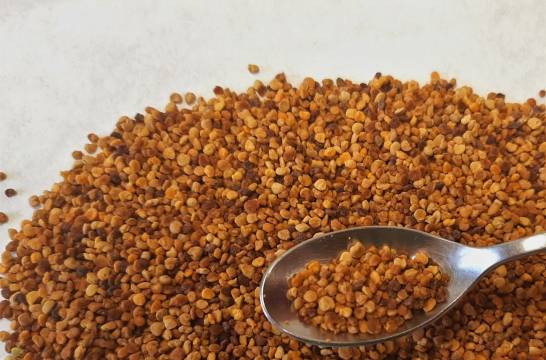Bee pollen is a natural product valued for its nutritional and medicinal benefits, and is gaining popularity for its potential use as a livestock feed and supplement. However, a study conducted by the CSIC, in collaboration with the University of Almería, detected the presence of four mycotoxins —aflatoxin B1, ochratoxin A, zearalenone and deoxynivalenol— in pollen samples from up to 28 countries, including Spain, which represent a latent threat to human health.
Some of these compounds naturally produced by some species of fungi or molds in cultures, such as aflatoxins, have been recognized by the International Agency for Research on Cancer (IARC) as the natural compounds with the highest carcinogenic potential for humans found in followed by ochratoxin A, deoxynivalenol or zearalenone. The work was published in the journal Food Control.
Some of the compounds found in bee pollen have high carcinogenic potential for humans.
Mycotoxins are a family of molecules that are normally found in food and that may pose a risk to the health of consumers, and for which no legal restrictions have been established on bee pollen. Along with carcinogenic effects, they have also been described as potent immunosuppressive, mutagenic, and teratogenic agents.
In this study, the presence of five mycotoxins —aflatoxin B1, ochratoxin A, zearalenone, deoxynivalenol and toxin T2— was evaluated using immunoenzymatic assays in 80 samples of bee pollen from countries such as China, Spain, United States, India, Italy and Russia , between others.
“Using the ELISA technique, mycotoxins were detected in all the analyzed samples”, explains María Dolores Hernando, researcher at the Experimental Station of Zonas Arids (EEZA-CSIC). “These samples, in addition to the different origin, include a great diversity in the characteristics of the pollen sold for human consumption, such as its production method (conventional and organic), its floral composition (mono and multifloral) and its processing (fresh pollen, dehydrated and like bee bread),” he adds.
The risk of aflatoxin B1 is considered of high concern in 84% of detected cases
The research team also evaluated the exposure margin as an indicator of the level of health risk in relation to the presence of carcinogenic mycotoxins and the risk associated with exposure to one or more mycotoxins. For this purpose, consumption data from the European Food Consumption Database of the European Food Safety Authority (EFSA) for different population groups were considered.
In 28% of the cases analyzed, the deoxynivalenol content exceeds the toxicological reference values, while aflatoxin B1, due to its concentration and detection frequency of 98%, is considered worrying in 84% of the cases.
Due to the lack of information about the extent of contamination with hazardous substances in bee pollen, several questions remain regarding the safety of this bee product. The researchers of this work highlight the need to improve the pollen drying and conservation processes, as well as the expansion of food safety controls to products considered, in general, of low consumption.
Reference:
Hernando, MH et al. “First research on the presence of mycotoxins in commercial bee pollen from 28 countries”, Food Control (2023)
